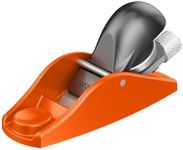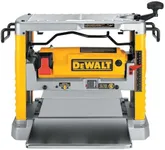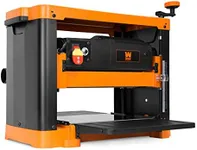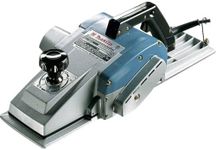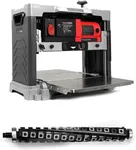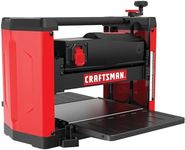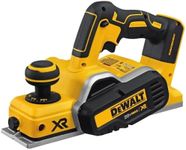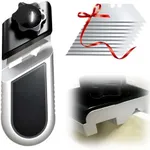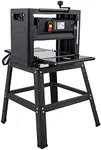Buying Guide for the Best Benchtop Wood Planers
Choosing the right benchtop wood planer can make a significant difference in the quality and efficiency of your woodworking projects. A benchtop wood planer is a tool used to smooth and flatten wood surfaces, ensuring uniform thickness and a polished finish. When selecting a benchtop wood planer, it's important to consider several key specifications to ensure you get the best fit for your needs. Understanding these specs will help you make an informed decision and choose a planer that meets your specific requirements.Cutting WidthThe cutting width of a benchtop wood planer refers to the maximum width of the wood that the planer can handle. This spec is important because it determines the size of the wood pieces you can work with. Cutting widths typically range from 12 to 15 inches. If you primarily work with smaller pieces of wood, a planer with a 12-inch cutting width may suffice. However, if you often work with larger boards, you might want to consider a planer with a wider cutting capacity to accommodate your projects.
Cutting DepthCutting depth indicates how much material the planer can remove in a single pass. This is crucial for efficiency and achieving the desired thickness quickly. Cutting depths usually range from 1/16 inch to 1/8 inch. For light-duty tasks and finer adjustments, a smaller cutting depth is adequate. For more substantial material removal and faster work, a larger cutting depth is beneficial. Consider the type of projects you undertake and choose a cutting depth that aligns with your needs.
Motor PowerMotor power, measured in amps or horsepower, determines the planer's ability to handle tough materials and maintain consistent performance. Higher motor power means the planer can handle harder woods and larger workloads without bogging down. Motors typically range from 10 to 15 amps. If you work with dense hardwoods or large volumes of wood, a more powerful motor is advisable. For lighter, occasional use, a lower-powered motor may be sufficient.
Cutterhead TypeThe cutterhead is the part of the planer that holds the blades and does the actual cutting. There are two main types: straight knife and helical (or spiral) cutterheads. Straight knife cutterheads are more common and less expensive, but they can be noisier and may leave more noticeable lines on the wood. Helical cutterheads are quieter and provide a smoother finish, but they are more expensive. Choose a cutterhead type based on your budget and the finish quality you desire.
Feed RateFeed rate refers to the speed at which the wood is fed through the planer, usually measured in feet per minute (FPM). A higher feed rate allows for faster material processing, while a lower feed rate can provide a smoother finish. Some planers offer adjustable feed rates, giving you more control over the balance between speed and finish quality. If you need to process large quantities of wood quickly, a higher feed rate is beneficial. For finer, more detailed work, a lower feed rate may be preferable.
Dust CollectionDust collection is an important feature that helps keep your workspace clean and reduces the amount of airborne dust. Planers with built-in dust collection ports can be connected to a shop vacuum or dust collection system. This is especially important if you work in a small or enclosed space. Look for planers with efficient dust collection systems to maintain a cleaner and healthier work environment.
PortabilityPortability refers to how easy it is to move and store the planer. Benchtop planers are generally designed to be more portable than stationary models, but they can still vary in weight and size. If you need to move the planer frequently or have limited workspace, consider a lighter and more compact model. However, if you have a dedicated workspace and prioritize stability, a heavier model may be more suitable.
